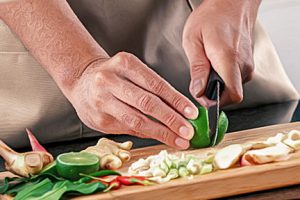 We all have that one thing that inexplicably delights us. For me, it’s making the perfect dal tadka. Soaking the lentils, sourcing the ghee, getting the right proportions of cumin, mustard and coriander seeds, crushing the ginger and garlic on a handmade ceramic grating plate, using my sharpest paring knife to slice the chillies… it all sends me straight to to my happy place, and I haven’t even started cooking yet.
We all have that one thing that inexplicably delights us. For me, it’s making the perfect dal tadka. Soaking the lentils, sourcing the ghee, getting the right proportions of cumin, mustard and coriander seeds, crushing the ginger and garlic on a handmade ceramic grating plate, using my sharpest paring knife to slice the chillies… it all sends me straight to to my happy place, and I haven’t even started cooking yet.
I learnt this recipe from a friend in India, who claims that no one in his family likes it because they used to have it when they were sick. I guess it has a status akin to chicken soup in his family. I don’t know if that’s what dal tadka is to other people, but I don’t really care – I’m happy to eat it at the drop of a hat, especially if I get to make it from scratch for someone who hasn’t had it before.
I like cooking other things as well, but there’s something special about the particular process of making dal tadka. Thinking about it now, I suppose it’s the association with travelling in India for the first time, meeting my friend’s awesome family (his mum’s chutney is to die for) and so on. Whenever I make it, I get a whiff of that whole experience, even here in my unnecessarily shiny kitchen. Renovation companies, across Melbourne in particular, could stand to take note of this – it’s not about just having the latest appliances and on-trend cabinet colours.
The basic bones of a kitchen don’t vary that massively around the world, at least not if you look at the bits that really matter: a cooking flame, a workspace, equipment storage, a water source. Of course, there are certain elements and cooking techniques that are specific to individual cultures, and these do result in culturally unique kitchen setups. Ultimately, though, they’re all built around the same activity, which is turning raw organic matter into the substance we know as food.